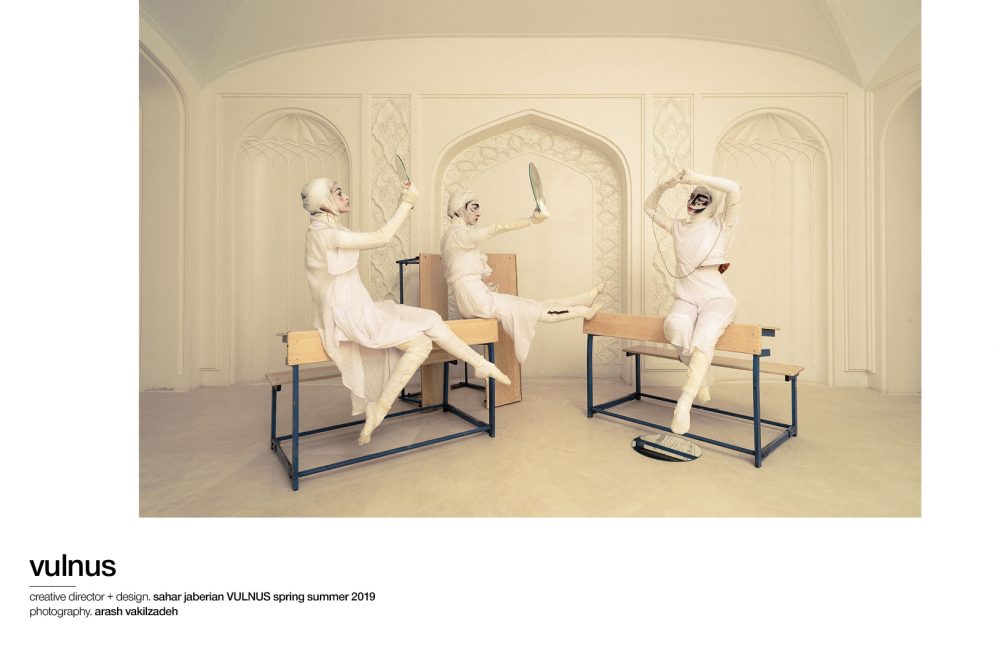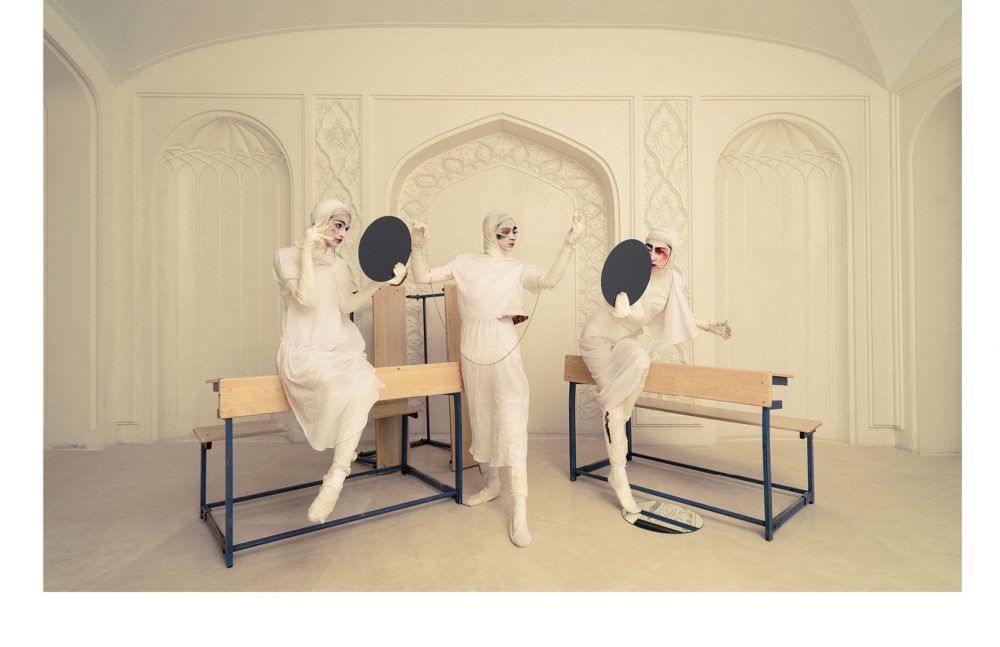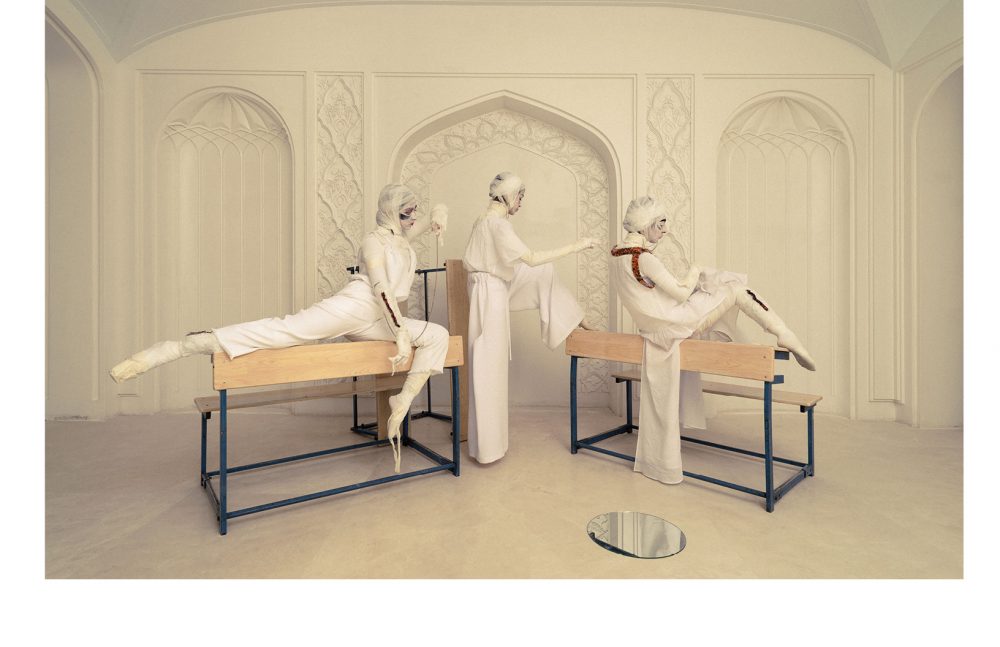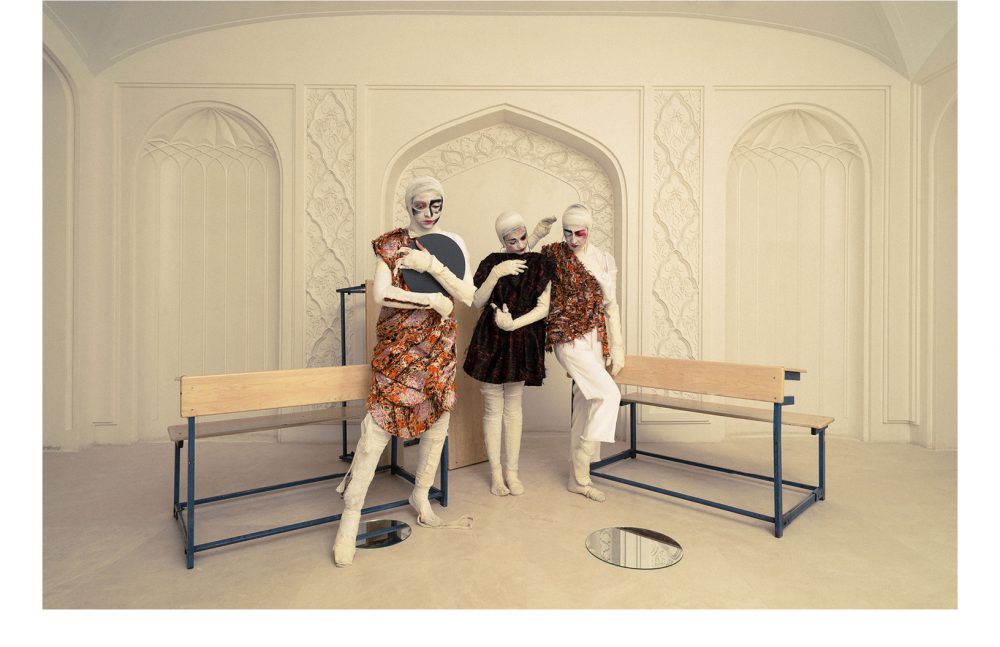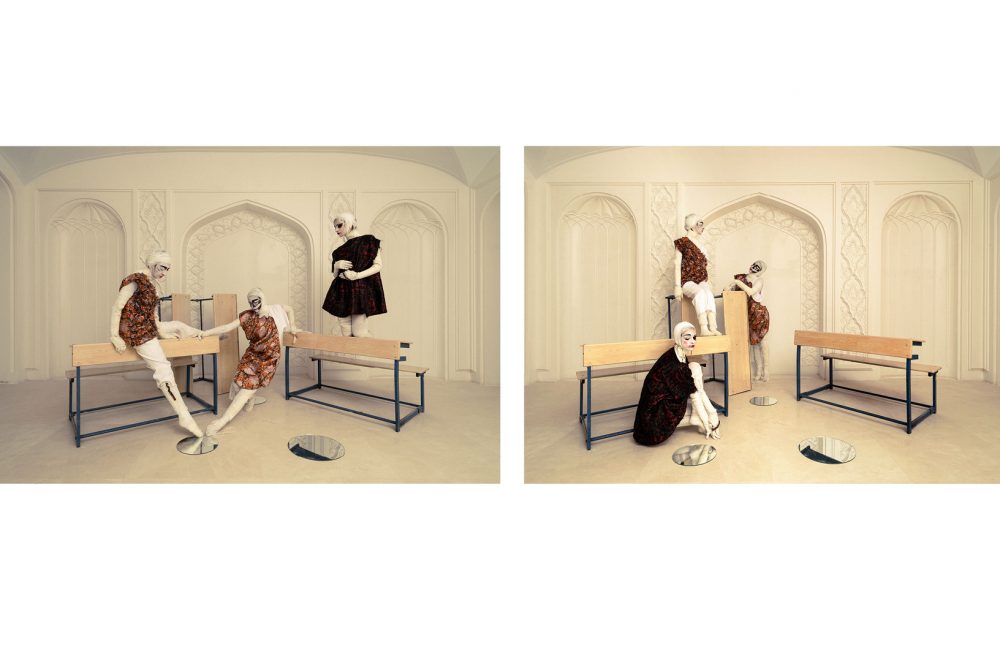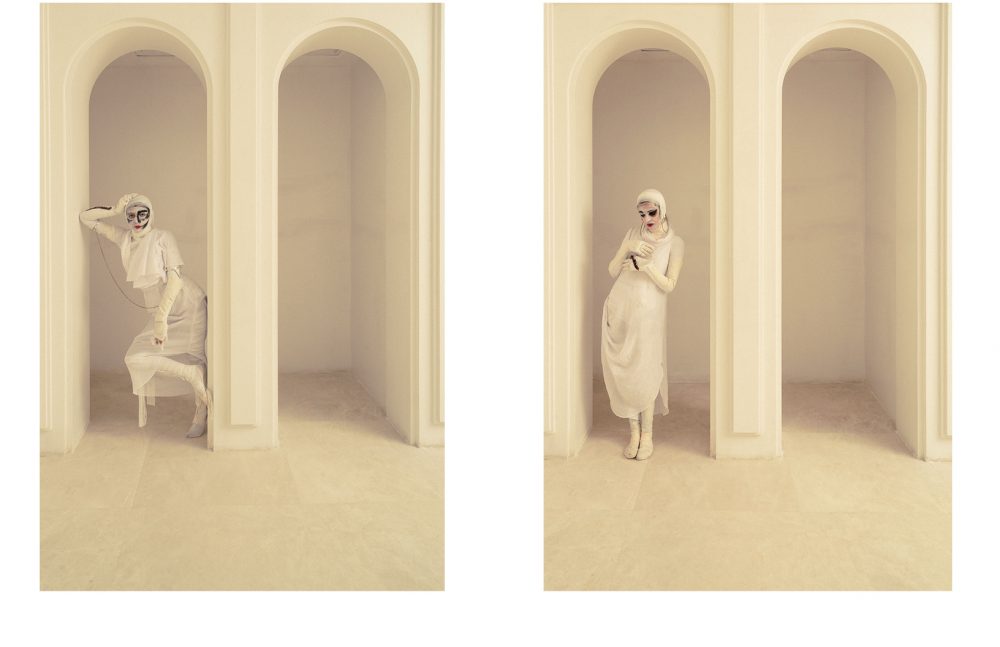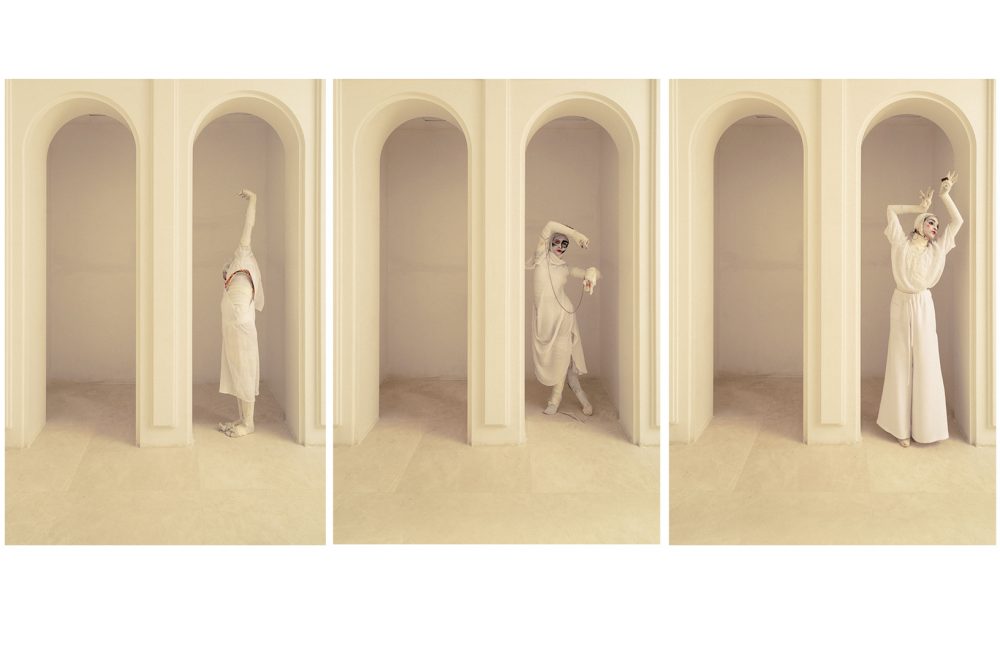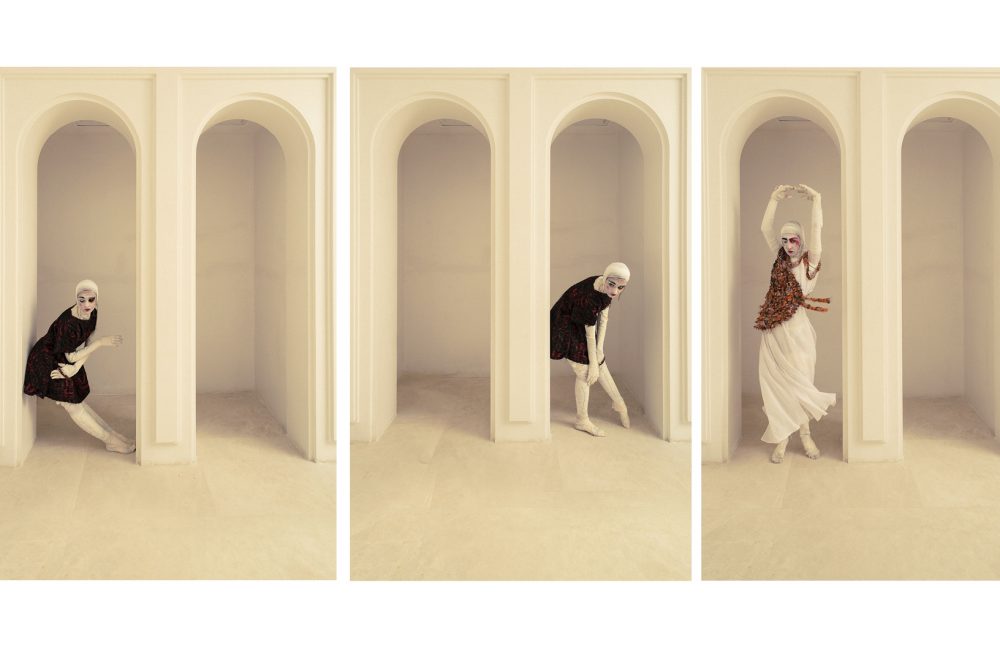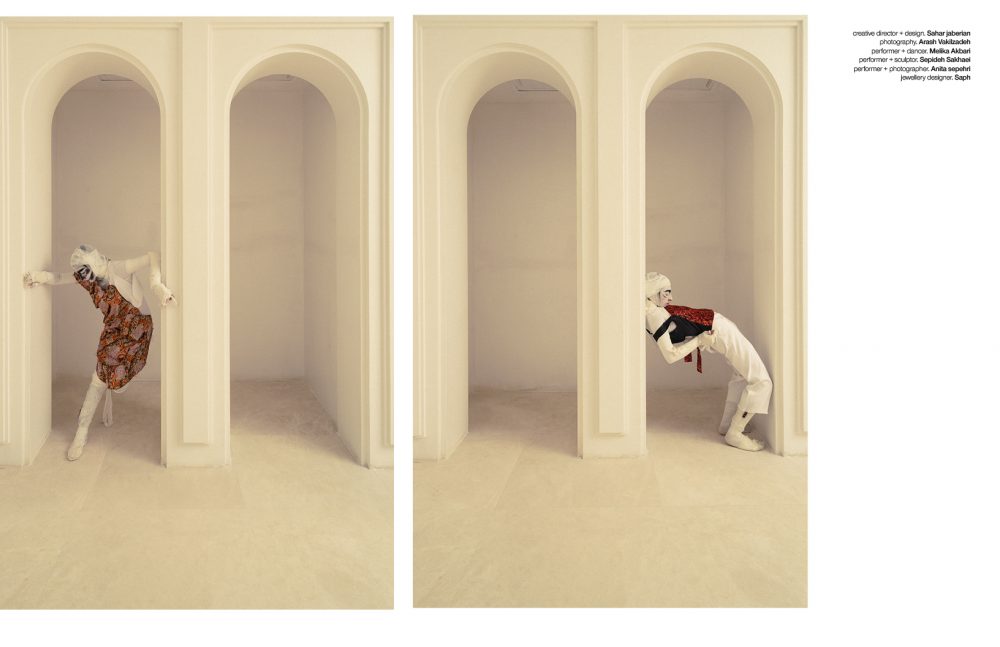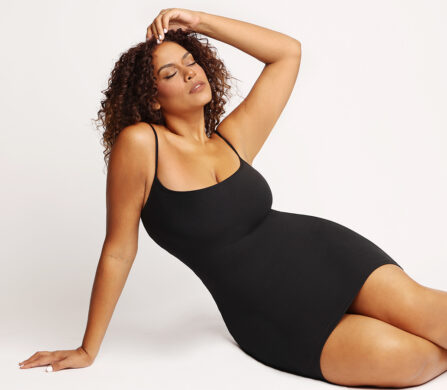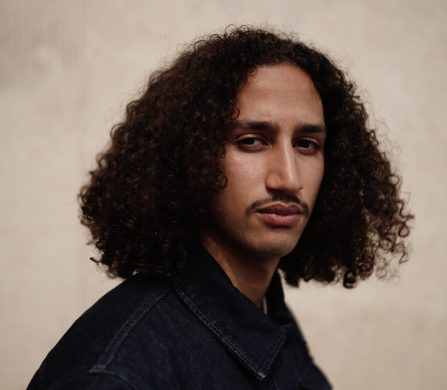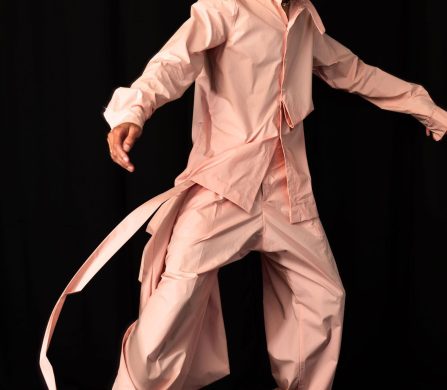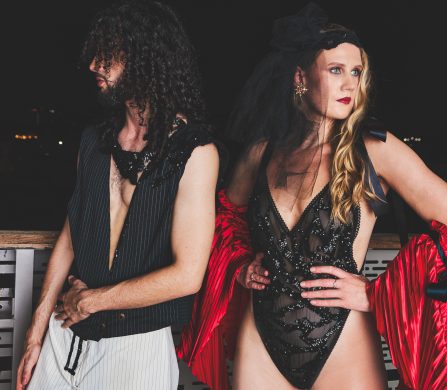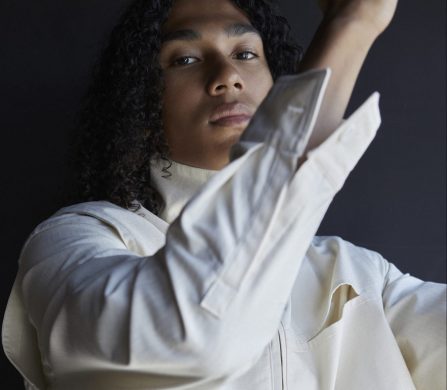Iranian designer Sahar Jaberian can be deemed a storyteller as much as a designer. Born in Tehran, her childhood wove the visual influences of the capital’s classic Islamic architecture with the hustle and frenetic nature of big city life. However, in these childhood years, she was also aware of her limitations – with concerns about safety, expression and, as exhibited in this most recent collection, school.
Though Jaberian has settled back in her home town of Tehran, her history extends far beyond Iran’s borders. She was schooled in both London and Paris, in the process taking in local and international styles from the European cities. During this time, she formed a greater sense of herself and what messages she wanted to convey through fashion, and now, as she builds a string of collections from her Tehran studio, the eclecticism and socially-conscious nature of her work resonate in every piece she produces.
Her latest collection, entitled Vulnus, explores themes of indoctrination, pain and youth. From her Tehran studio, Jaberian spoke to us about the meaning behind the collection and the process behind this particularly difficult photoshoot.
When did your interest in fashion begin?
I never knew from the beginning that I wanted to do fashion. I grew up in Tehran and there was no source of fashion — only Fashion TV, MTV and some music channels. As a child, I always enjoyed dressing up as different characters, creating scenes, acting and dancing. I was always mesmerized by things like interior design, costume design, light design, etc. To pursue my higher education, I decided to move to London inclined to major [in] art or something pertinent to creativity. I ultimately opted for fashion design, which is fascinating and interesting to me.
London’s fashion was way too unique, capturing me from the very first days. I was surprised and amazed by how individual people were and how they were expressing themselves. I remember our design teacher handed us a list of places to visit – that was the most exciting way to start my experience in London — [which] included strolling around Camden Town and Brick Lane and visiting markets like Portobello and Dover Street Market.
After London, you were educated in Paris, eventually returning to Tehran. What intrigued you about Paris, and why did you ultimately decide to come back to Iran?
Despite my wild experience in London, initially, Paris was kind of depressing. Fashion-wise, it wasn’t as fascinating as London — culture-wise it was familiar somehow and easy to cope with — but, most importantly, I couldn’t speak French. It was hard to communicate and get to know people and the city. You know, having moved to Paris, fortunately, I found out that it was completely different compared to what I had in mind. After a year, I managed to see Paris differently – [in a] more inspirational [way]. Besides its artistic and beautiful appearance, it has a mad, grungy, and dark underground scene. I fell utterly in love with this paradox and how everything is hidden and mysterious. Everything is magical and story-like, so I found the whole experience way too inspiring as a new start to my vision.
Right after graduation, I started making my first collection in Iran while still in Paris. Meanwhile, I enrolled in [a] one-year fashion business at Istituto Marangoni. Doing a collection, communicating with teachers about the style of my work, the process and the presentation, led me to ponder upon returning to Iran — a country known for art and the artistic grandeur of its designs — and start from my own home town where all my story began. There was actually a deep down desire in me to convene locally.
So after eight years of living abroad, I decided to go back to Tehran to start my line and be more focused on my work. Living in Tehran has given me an opportunity to find local artists to work with and provided me more time to do research, work and experience new mediums.
How has your design process changed since returning home?
I enjoy challenging traditional fashion and bringing old-fashioned garments back into the scene by incorporating them in contemporary designs. Since I’ve been back to Iran, I got to know many artisans who weave and sew garments and decorative items by order. Their handwork is so fine and beautiful, and it’s a privilege to be able to work with them. Now, there are other designers who are working with these artisanal garments and breathing life into this precious art. The most interesting part of my work here is that I am finding the right team that allows me to manifest this idea of blending contemporary and traditional design with technology, making it more sustainable. Of course, at this stage, it is [still] an experimental design.
Your most recent collection incorporates “school” as the main theme. What about school as a concept made you decide to work it into your collection?
Each of my collections tends to challenge — staging an issue or a fact that is kind of whitewashed in Iran. Vulnus is the first collection I did since I got back. I decided to relate it to school since it’s one of the major effective places where children grow up. The first thing I ever noticed after moving to London was that students are gradually brainwashed in schools in Tehran, and they never notice it. As a result, their personal lives are engaged and intertwined with school. Sadly, they are encouraged to take on and fade into a pseudo-personality. I grew more alert and aware of this dire situation, which finally gave me the idea and the audacity to showcase the real person. The person these students desire to be. This is, unfortunately, my first-hand experience as a high school student in Iran. I broke free of all rules dictated to me in my youth when I got to London, when I got to see the world. Now I want to give back. I want to show what all students really desire. Freedom through fashion.
The setup for this photo series was labour-intensive. Describe the process and why you decided to set it up in this way.
Accordingly, I wanted to discuss how teachers shape students’ characters and turn them into something dull. Therefore Arash, my photographer, and I decided to use models that look like sculptures.
We wrapped models in white bandages, which were previously soaked in white modelling acrylic. To make more maquette-like models, we had to cut out some pieces of the bandages and sew them directly on models clothes being worn underneath the bandages. It took us 11 hours to do the whole set design, styling and shooting. But to my surprise, no one gave up. Actually, we had no idea what to expect when we were sewing the bandages.
The set up included three school tables irregularly arranged and three round mirrors. I decided to do the shoot in this room because of its Islamic plasterwork and off-white walls – representing classrooms. Models have surreal and smudged makeup to help them look pale, tired and emotionless.
“Vulnus” means wound. What does that mean in terms of your collection?
“Wound” is the incorrect culture that’s been imposed on students, and if we don’t see to the wound it exacerbates harming the health of the cell, skin, body and mind. The garments in this collection also show the sequential growth of the wound from how it appears to how it becomes part of the main piece. The main pieces, on the other hand, are made of organic white fabrics to show the clarity and simplicity of students’ initial personality.
What have been your biggest challenges working in the Iranian fashion scene?
There’s a plethora of limitations and restrictions surrounding us in Iran, therefore, there should be a lot of editing in the whole process of designing and shooting so that it can be presented amicably and peacefully. In addition to this situation, there is a narrow fashion perception. There is not much individuality in Iran’s fashion scene. People usually follow what’s already been accepted by the majority of Europe and the U.S. They are mostly following the trend, more like copy-paste, so it’s hard to attract their attention with contemporary fashion and get them to try something new. Yet, I’m here for this challenge, and I find the whole process and struggles captivating.
How has your work been received, both locally and abroad?
It’s been around 15 months since I started my work in Tehran. Luckily I’ve got to know customers who come to my studio on a regular basis where we discuss their needs while having fun talking, designing and doing the fittings. It’s my favourite way of working… Despite this short time working in Tehran, where I have done a solo show and few group works, I am glad that I’ve become acquainted with people from different backgrounds who are curious about what I am doing and all the stories behind my collections. Their comments and encouragements are always helpful. Generally speaking, I can say that I’m surprised by how my work has impressed many. I haven’t started any serious sales or presentations abroad “yet.” Hopefully this year I’m going to show and start an online shop in Europe. So we’ll see!
Besides those potential shows and online shop, what can we expect from you as a designer in the coming years?
Recently I’ve felt that I have the calling and that I’m able to take more risks, experience more challenges and put more effort into developing new ideas, using new fabrics, finding new ways to peacefully present my in pending collections in Iran and abroad.
Discover more about Sahar Jaberian and the ‘Vulnus’ collection here and make sure to follow the brand on Instagram.
creative director + design. Sahar Jaberian
photography. Arash Vakilzadeh
performer + dancer. Melika Akbari
performer + sculptor. Sepideh Sakhaei
performer + photographer. Anita Sepehri
jewellery designer. Safoura Sadeghianpour (a.k.a. Saph)
words. Braden Bjella












